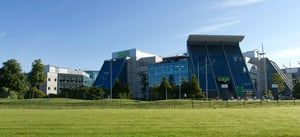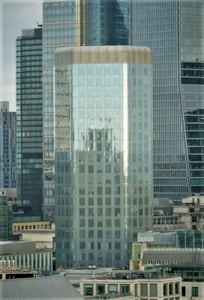Tissue Regenix plc (LON:TRX) is the topic of conversation when Hardman and Co’s Analyst Dr Martin Hall caught up with DirectorsTalk for an exclusive interview.
Q1: This is the first time that Tissue Regenix has been featured, could you briefly describe what the company does?
A1: They arean international medical device company focused on the development and commercialisation of products for regenerative medicine. It has two proprietary platform technologies, dCELL and BioRinse, from which all its products are derived, dCELL being an in-house development and BioRinse acquired with the CellRight acquisition in 2018. Both these technologies start with human or animal tissue or bone which is then decellularized, i.e. all the DNA and cells are removed, leaving a scaffold which can be used to repair diseased or worn-out body parts. In the early years, the focus was on product development, but with at least one product approved by both the US and European regulators, more recently attention has been more on commercialisation.
Q2: The share price suggests that the company has been through some difficulties. What has been going on?
A2: The last 18 months have been particularly challenging. Most listeners and investors will be aware that development of MedTech products is capital intensive. It was always thought that TRX had a strong group of shareholders, with the top three holding 70% of the company, but events in 2019 beyond the company’s control showed that was not the case. Just when TRX was looking for more growth capital from its shareholders for investment to satisfy product demand, it needed to find a totally new group of investors, which is never easy.
Then, earlier in 2020, having found the relevant amount of capital to make the investment in capacity expansion, the COVID-19 pandemic came along which significantly reduced the number of elective surgeries being performed, which directly impacted sales. Despite all of these challenges, demand for its products has never diminished.
Q3: So, in your opinion, has the company turned the corner?
A3: At the interim stage, the new management team provided a very reassuring update to the market.
First, despite those challenges, particularly the reduction in elective surgeries, sales were broadly flat compared with 1H’19. In addition, there was evidence of a return to elective surgeries in certain states. I should point out that nearly all of the company’s sales are derived in the US, so that is the market to focus on.
Secondly, the group has announced a number of strategic partnerships for both the supply and the commercialisation of products. This highlights the specialisation of TRX’s technologies and products and underlines the strong and rising demand that the group has consistently reported.
Thirdly, with new capital in the bank coupled with an easing of the pandemic lockdown, in July, the company was able to initiate Phase 1 of its expansion programme at its US facility to significantly increase manufacturing capacity. This will take about six months to complete and early benefits should emerge during the second half of 2021.
After this, TRX will embark upon the much larger Phase 2 of the facility expansion, which will take a further 12 months to complete. When finished, this investment is expected to add around $35m per annum to sales.
We believe that commercial partners will be much more forthcoming with orders when they are reassured that products will be delivered in a timely manner.
Meanwhile, management has been implementing a number of initiatives to reduce the group’s overhead. Organisational restructuring reduced the underlying cost base by about 25% in the first half of 2020, with further improvements expected in the second half and into 2021.
Apologies, a long answer to your question, but yes, we believe that TRX has turned the corner and is now very well positioned for the sales generation required to reach breakeven and become cash generative.
Q4: What are the risks?
A4: Along with the interims, global uncertainty made the company reluctant to provide the market with any financial guidance. This is understandable given the impact seen by the first global COVID-19 lockdown for most of the second quarter. We believe that the third quarter again saw some return towards normality. However, as we sit here today, on the verge of a second global lockdown, it does create more uncertainty.
Having said that, the key for TRX is that elective procedures can only be postponed, and, at some point in the future, they are likely to be performed to improve a patient’s wellbeing. Therefore, product sales are only deferred.
Q5: How would you summarise an investment in Tissue Regenix?
Licensing agreements and strategic commercial partnerships highlight that TRX has an innovative set of regulatory approved products, which are increasingly in demand by surgeons and physicians. Two years ago, management embarked on four strategic growth drivers and progress is being seen with each of these on a half-year, by half-year basis.
The company has the required funding in place to scale-up manufacturing capacity to satisfy demand and drive sales growth, leaving it well positioned to forge ahead with its strategic goals and to deliver a breakeven position as soon as possible. Delivering on its stated milestones should see a re-rating of the shares.







































